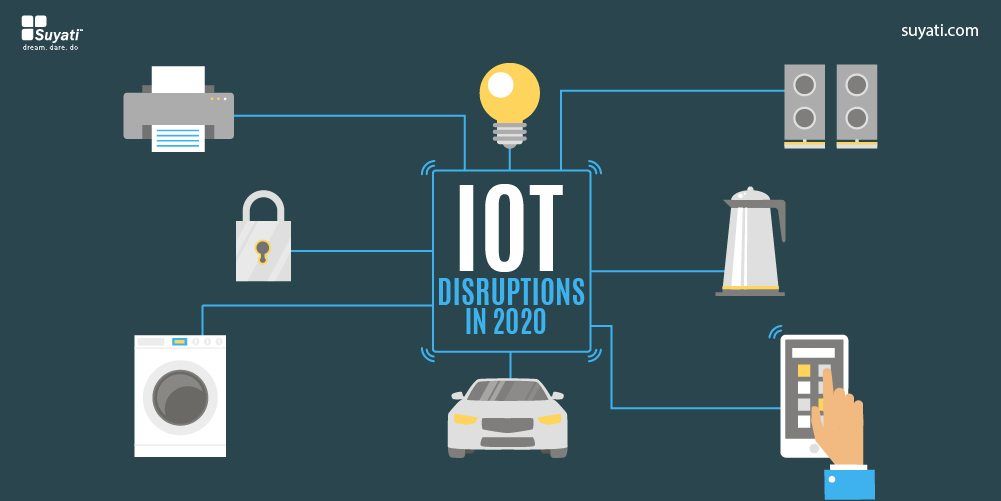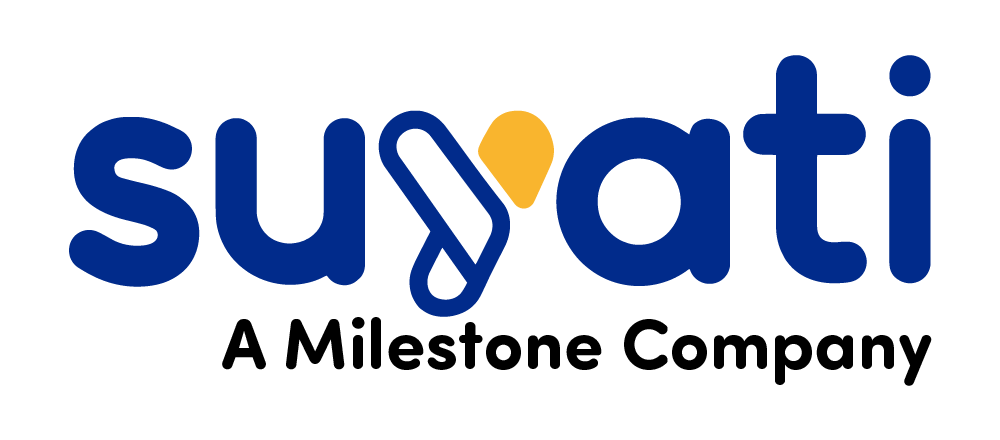
The Internet of Things (IoT) promotes intelligent computing by connecting people, machines, and data. With this technology, companies are unlocking new opportunities that were not possible before.
It is disrupting numerous industries, especially manufacturing, energy, agriculture, healthcare, and automobiles.
By leveraging this technology, companies can achieve sizable competitive advantage through fast processes, mega-automation, huge cost savings, massive productivity and overall efficiency in business.
Manufacturing
The earliest application of IoT has been in the furtherance of smart homes—IoT sensors are attached to home appliances such as lighting, refrigerators, and air conditioning systems to access control, and much more.
Such concepts are now being applied in the industrial and manufacturing sectors for increasing efficiency. For instance, several production facilities now rely on smart sensors and machine learning to make in-line process adjustments.
Newer IoT technologies are poised to cause even more disruptions. The application of advanced analytics to data generated by IoT sensors not just brings in efficiency and quality improvements, but also optimizes scheduling of production based on demand and optimal workforce distribution. It can also predict impending machine failures.
IoT is also poised to disrupt supply chain management in a big way. IoT devices, powered by smart sensors, can accurately identify products to ease bottlenecks, and deliver the twin benefits of improved efficiency with reduced costs.
Overall, global manufacturers are predicted to invest $70 billion in IoT solutions in 2020, a big jump from the $29 billion investment in 2015.
Energy and Utilities
Oil and gas companies are already using IoT technologies for functions such as measuring vital statistics along drilling lines, and adjusting the speed and pressure of the drilling procedure; which are bringing about process optimization and cost reduction. Smart energy grids, which optimize the generation and distribution of power and other resources, rely on IoT devices to communicate between the grid and the consumer. Down the value chain, IoT-connected devices allow utilities to enforce great control and tight security.
Going forward, the scope of IoT application in the energy and utility industry is all set to increase manifold. IoT devices could make the process of integrating new renewables and distributed energies into the system seamlessly. The predictive maintenance analytics generated by IoT would reduce downtime and maintenance costs.
The insights on capacity demand, pricing options, issue identification, and more, will propel new products and services outside of the traditional utility model, and also offer greater value-added services to consumers.
A case in point is Oklahoma Gas & Electric that uses IoT powered customer analytics on customer responses to price signals and target the best customers with specific marketing campaigns.
The global installed base of smart meters allows customers to track and optimize their energy usage. It is set to touch 930 million units in 2020, more than double from what was installed in 2015.
Agriculture
Agriculture industry is all set for IoT powered transformation. The predictive capabilities brought in by IoT enables several disruptions, from proactive scheduling of machinery repairs to syncing cropping with monsoons. The net result is a drastic improvement in efficiency and productivity.
The combination of IoT and big data analytics would unlock new business models in agriculture, heralding a shift from mass harvest and storage to coordinating harvesting with supply chain availability and market demand.
Sensors embedded on farm equipment and fields collect valuable information on the weather, humidity, temperature, soil conditions, level of chemicals in the atmosphere, air quality, and other such key data. This info can help farmers to optimize allocation of water, fertilizers and other resources, and make proactive interventions, depending on each crop. Smart sensors allow monitoring and controlling pumps, equipment and machinery from remote locations.
Advanced use of IoT allows efficient management of irrigation through optimal use of pumps, ascertaining that farmers get correct water levels and fuel supply.
IoT propelled digitization of the supply chain empowers machinery, packaging plants and warehouses to communicate with one another and facilitates tracking produce from source to retail shelf, making it easy to enforce robust quality control and preempt problems at source.
Using predictive analytic tools could sync the harvest and the packers, as well as machines and delivery trucks required on any given day; and the harvest itself could be optimized based on demand.
IoT device installations in agriculture is estimated to touch 75 million in 2020, up from 30 million in 2015, with a compound annual growth rate of 20%. Farmers who use IoT in a big way have already started reaping rich rewards. For instance, farms in the USA applying IoT technologies extensively reap a yield of 7,340 kg of cereal per hectare, compared to the global average of 3,851 kg of cereal per hectare.
Healthcare
IoT brings potentially new life-saving capabilities to healthcare. It heralds massive quality improvements and processes.
IoT technology can spare patients from making clinic visits, as self-monitoring and management of health become easy and reliable. IoT powered biometric devices enable people to monitor vital signs and transmit the data to their healthcare providers. Built-in alerts on vital parameters breaching set thresholds, prompts remedial action.
While wearable devices already provide self-diagnosis and predictive capabilities, what is on offer now is just the tip of the iceberg, compared to the possibilities. A wide range of wearables, from conventional watches that track fitness to clothing that monitors respiration rate, and from football helmets with impact detection capabilities to smart glasses that enable augmented reality are all set to become commonplace, even as the next wave of wearable technology threatens to make these innovative gadgets itself obsolete! These wearables generate biometric and environmental data that enable smart decision-making capabilities.
For healthcare providers, collating data from various sources and analyzing them into actionable console improves productivity manifold. This allows treating more patients in less time. Integration of big data systems provide holistic information on the patient’s lifestyle, history, medication, and other key traits, improving the quality of consultation drastically. The availability of continuous data on a real time basis allows healthcare providers to anticipate trends at both individual and macro level, enabling proactive intervention, to preempt disease rather than try and cure it after it comes to pass.
About 60% of healthcare providers already have some sort of IoT capabilities and this figure is set to rise to 85% of businesses by 2019.
Automobiles
A key area of interest in IoT is the emergence of smart vehicles, which has the potential to change transportation as we know it today.
IoT is all set to connect large number of vehicles to one another. Such connected vehicles sense and analyze information from the environment to make optimal routing and offer maximum comfort to the occupants.
Automobile companies may monitor and control vehicles from a central console, track performance of the engine and other components to ensure proactive maintenance, respond in real time to mechanical issues, and do more.
The emergence of autonomous vehicles on-call will change the very nature of commute, and radically overhaul the very concept of public transportation system.
Goldman Sachs Research estimates more than 12 billion devices already connected to the Internet of Things and this number is expected to surge to 30 billion by 2020. Its impact on the world as we know it today will be just as profound as the disruption caused by the invention of the steam engine and internal combustion engines.
To talk to us about IoT-related services, or to send us your feedback about this blog, write to services@suyati.com.
Related blogs:
Top 7 IoT Technologies to Invest in 2017
Harnessing the IoT potential for a well-connected future
Top 10 IoT Operating Systems Powering the Future
